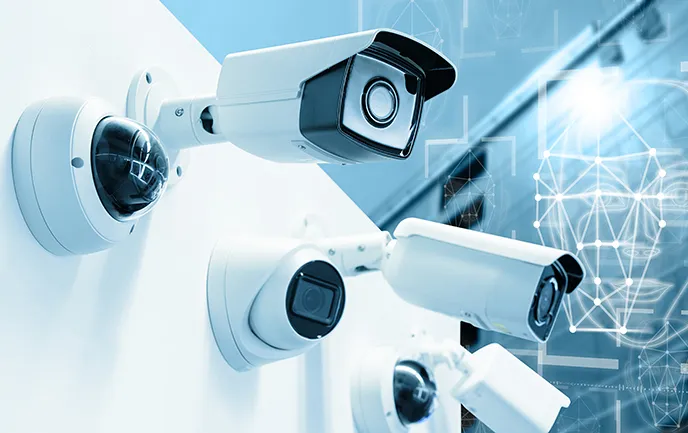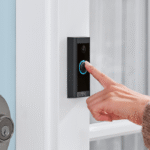Outdoor security cameras face constant exposure to environmental elements, with dust and sand being among the most damaging. These tiny particles may seem harmless, but they can significantly impact your camera’s performance over time. Dust accumulation on lenses leads to blurry footage, while sand can jam mechanical parts like pan-tilt mechanisms. Even weatherproof cameras aren’t completely immune, as fine particles can eventually wear down seals and gaskets. Regular maintenance and proper installation can prevent these issues, ensuring your cameras remain reliable year-round.
Common Problems Caused by Dust and Sand Accumulation
Blurry or Obstructed Video Footage
One of the most noticeable effects of dust and sand is degraded video quality. When particles settle on the camera lens, they create hazy or spotted footage, especially noticeable in direct sunlight or at night with infrared lighting. Over time, abrasive sand particles can even scratch the lens surface, causing permanent damage that affects all future recordings. Dust buildup on infrared sensors reduces night vision effectiveness, making it harder to identify intruders after dark. Regular cleaning helps, but prevention is better—positioning cameras under eaves or using protective housings minimizes exposure. For areas with frequent dust storms, cameras with wiper systems or self-cleaning lenses offer added protection.
Mechanical Failures in Moving Parts
Cameras with pan-tilt-zoom (PTZ) capabilities are particularly vulnerable to sand damage. The fine grains work their way into gears and motors, causing grinding noises, sluggish movement, or complete mechanical failure. Even fixed cameras have vulnerable points like focus mechanisms and mounting joints where dust accumulates. Once inside, these particles act like sandpaper, gradually wearing down components until repairs become necessary. Choosing cameras with sealed bearings and reinforced moving parts helps, but proper placement away from ground-level dust clouds is equally important.
Corrosion and Weatherproofing Breakdown
While most outdoor cameras are weather-resistant, prolonged exposure to sand and dust accelerates wear on protective seals. Salt-laden beach air is especially corrosive, causing metal parts to rust and plastic to become brittle over time. Dust mixed with moisture creates a gritty paste that degrades rubber gaskets, eventually allowing water infiltration. This not only damages electronics but also voids warranties in many cases. Cameras with IP66 or higher ratings offer better protection, but they still require periodic inspections of seals and housings. Applying dielectric grease to connections and using silicone covers for unused ports adds an extra layer of defense. In coastal areas, stainless steel hardware and anti-corrosion sprays can significantly extend your camera’s lifespan.
Essential Protective Measures for Dusty Environments
Choosing Weatherproof and IP-Rated Camera Housings
Investing in properly rated equipment is the first line of defense against environmental damage. Look for cameras with at least an IP66 rating, indicating complete protection against dust ingress and strong water jets. For extreme environments, IP67 or IP68 ratings provide even better sealing against fine particles and temporary submersion. Metal housings generally withstand sand abrasion better than plastic, though high-quality polymers with UV stabilization are also effective. Some specialized housings feature air-filtered ventilation systems that prevent dust buildup while allowing heat dissipation. When selecting cameras, prioritize models with gasket-sealed lens covers and tightly secured cable entry points to block particle entry.
Proper Camera Placement to Minimize Exposure
Strategic installation significantly reduces dust and sand contact. Mount cameras under roof overhangs or eaves where possible, creating natural protection from wind-blown debris. Avoid positioning near gravel paths, sandboxes, or frequently disturbed dusty areas where foot traffic kicks up particles. Elevating cameras at least 8-10 feet above ground level keeps them above most dust clouds while maintaining optimal viewing angles. For pole mounts, consider adding a downward-sloping shield above the camera to deflect falling sand and rain. In desert climates, orient cameras so prevailing winds don’t blow dust directly onto lenses. Simple adjustments like these can double or triple your equipment’s service life with minimal effort.
Using Protective Covers and Shields
Aftermarket accessories provide affordable added protection. Clear acrylic dome shields attach over camera lenses, taking the brunt of sand impact while maintaining visibility—replace these inexpensive shields when they become scratched instead of the entire camera. For PTZ models, flexible rubber bellows covers protect moving joints without restricting motion. In seasonal dust storm areas, removable fabric covers with drawstring closures offer temporary protection when extreme conditions are forecasted. Some homeowners install small plexiglass wind barriers a few feet from cameras to disrupt sand-laden wind patterns.
Cleaning and Maintenance Best Practices
Regular maintenance prevents small issues from becoming major problems. Start by gently brushing away loose dust with a soft-bristle camera brush or compressed air canister held upright to avoid moisture discharge. For lenses, use a microfiber cloth designed for optics, moving in straight lines from center to edge—never circular motions that can grind in particles. Isopropyl alcohol (70% or less) on a swab cleans stubborn grime without damaging coatings. Check seals monthly, reapplying silicone grease if they appear dry or cracked. During deep cleaning, power off cameras to prevent electrical shorts from moisture. In sandy areas, increase cleaning frequency after windstorms—sand particles are sharp enough to scratch surfaces if rubbed during cleaning. Always follow manufacturer guidelines to avoid voiding warranties.
Conclusion
Protecting outdoor security cameras from dust and sand requires durable equipment and proper maintenance. For reliable performance, consider options like eufy outdoor security cameras, which combine 4K clarity, AI motion detection, and color night vision with exceptional weather resistance. Their robust design handles harsh conditions while delivering clear footage day and night. By choosing quality cameras and following basic protection measures, you’ll ensure your security system remains effective for years to come. A well-protected camera means better home security and greater peace of mind.


